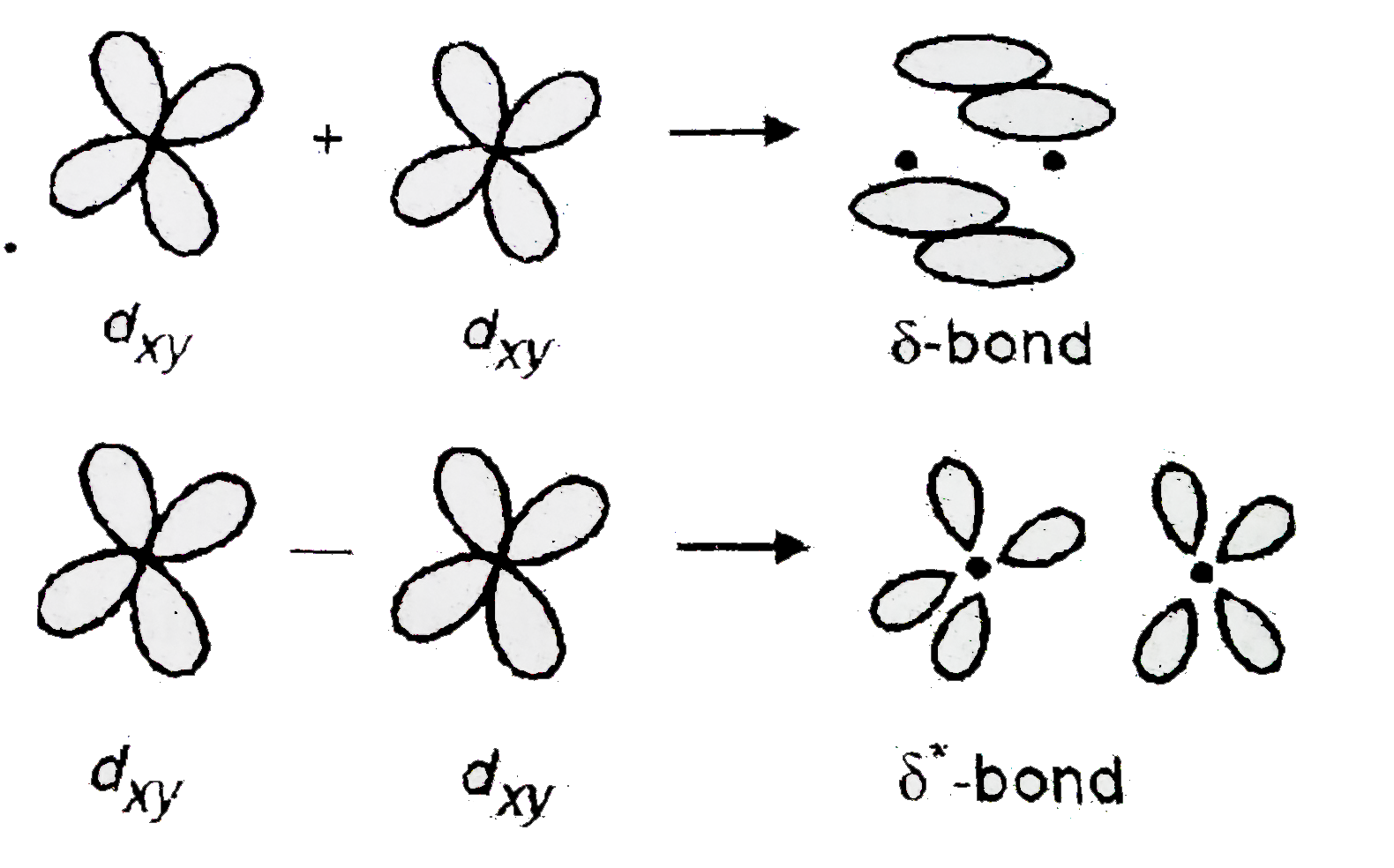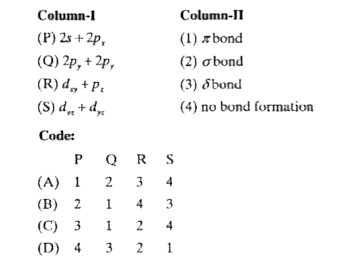The number of lobes in δ and δ∗ formed by the overlap of two dxy A.O.s, are (Z-axis is internuclear axis)
4 and 8 respectively
3 and 6 respectively
4 and 10 respectively
6 and 8 respectively.
The correct Answer is:A
Topper's Solved these Questions
- BOOK - DINESH PUBLICATIONCHAPTER - CHEMICAL BONDING AND MOLECULAR STRUCTUREEXERCISE - Brain Teaser-140videos
CHEMICAL BONDING AND MOLECULAR STRUCTURE
- BOOK - DINESH PUBLICATIONCHAPTER - CHEMICAL BONDING AND MOLECULAR STRUCTUREEXERCISE - Brain Teaser-240videos
CHEMICAL BONDING AND MOLECULAR STRUCTURE
- BOOK - DINESH PUBLICATIONCHAPTER - CHEMICAL BONDING AND MOLECULAR STRUCTUREEXERCISE - Reason Assertion37videos
CHEMICAL BONDING AND MOLECULAR STRUCTURE
- BOOK - DINESH PUBLICATIONCHAPTER - CARBOXYLIC ACIDS EXERCISE - BRAIN STORMING MULTIPLE CHOICE QUESTIONS (MCQS)13videos
CARBOXYLIC ACIDS
- BOOK - DINESH PUBLICATIONCHAPTER - CHEMICAL KINETICSEXERCISE - Additional Numerical Problems For Practice16videos
CHEMICAL KINETICS
Similar Questions
Knowledge Check
- Question 1 - Select One
Which of the following overlaps is incorrect? (Assuming z-axis to be the internuclear axis)
A2py+2py right arrow π2pyB2pz+2pz rightarrow σ2pzC2px+2px→π2pxD1s+2py→π(1s−2py) - Question 2 - Select One
Which of the following overlaps gives a σ bond with x as internuclear axis?
Apz and pzBs and pzCs and pxDs and p_(y) - Question 3 - Select One
The area of triangle formed by the lines l1andl2 and the x-axis is:
 A7 sq. unitsB92 sq.unitsC72 sq.unitsD4 sq. units
A7 sq. unitsB92 sq.unitsC72 sq.unitsD4 sq. units
Which of the following overlaps of atomic orbitals does not form π-bond if z-axis is the internuclear axis?
View SolutionIf x-axis is the molecular axis, the π-molecular orbitals are formed by the overlap of
View SolutionIf Z−aξs is the molecular axis, then π−molecular orbitals are formation by the formed by the overlap of
View SolutionAccording to MOT, two atomic orbitals overlap resulting in the formation of molecular orbital formed. Number of atomic orbitals overlapping together is equal to the molecule orbital formed. The two atomic orbital thus formed by LCAO (linear combination of atomic orbital) in the phase or in the different phase are known as bonding and antibonding molecular orbitals respectively. The energy of bonding molecular orbital is lower than that of the pure atomic orbitals by an amount Δ. This known as the stabilization energy. The enerby of antibonding molecular orbital in increased by Δ' (destabilisation energy).
Q. If x-axis is the molecular axis, then π-moleulcar orbitals are formed by the overlap of :View SolutionAccording to MOT, two atomic orbitals overlap resulting in the formation of molecular orbital formed. Number of atomic orbitals overlapping together is equal to the molecule orbital formed. The two atomic orbital thus formed by LCAO (linear combination of atomic orbital) in the phase or in the different phase are known as bonding and antibonding molecular orbitals respectively. The energy of bonding molecular orbital is lower than that of the pure atomic orbitals by an amount Δ. This known as the stabilization energy. The enerby of antibonding molecular orbital in increased by Δ' (destabilisation energy).
Q. If x-axis is the molecular axis, then π-moleulcar orbitals are formed by the overlap of :View Solution



